





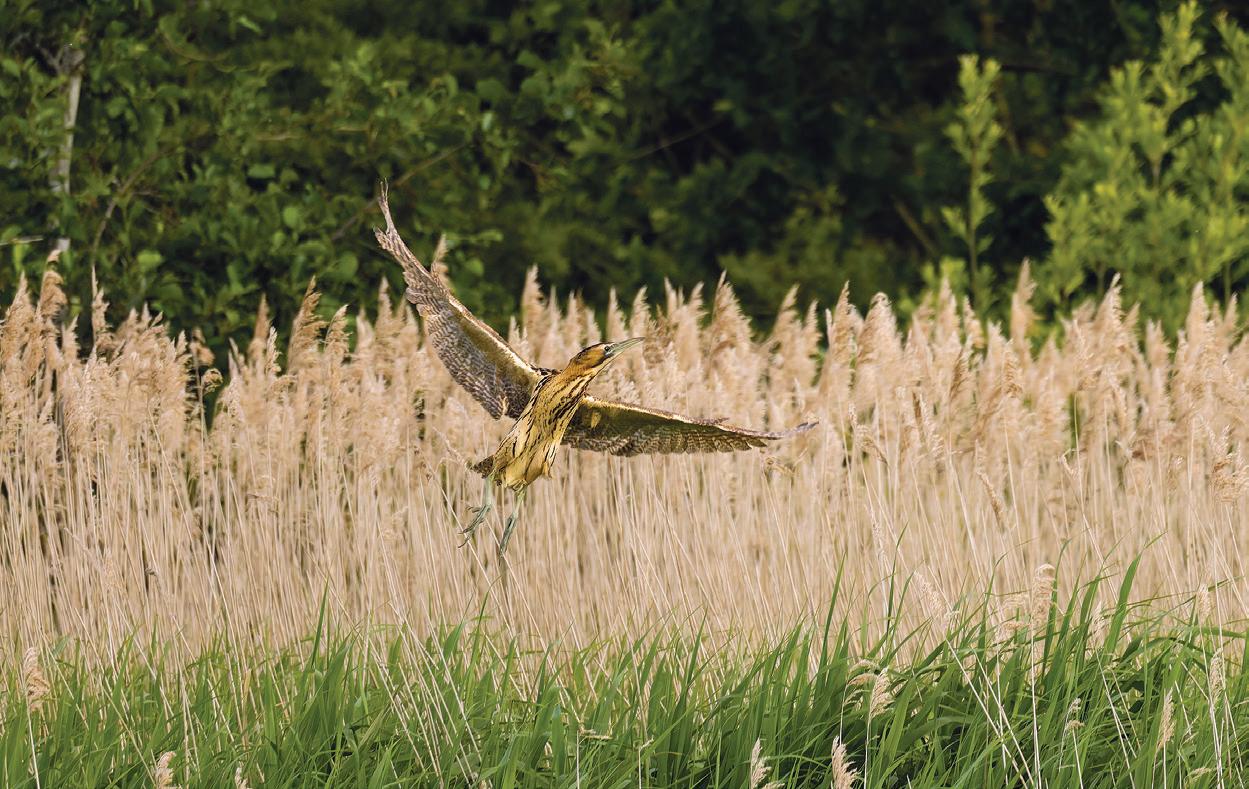






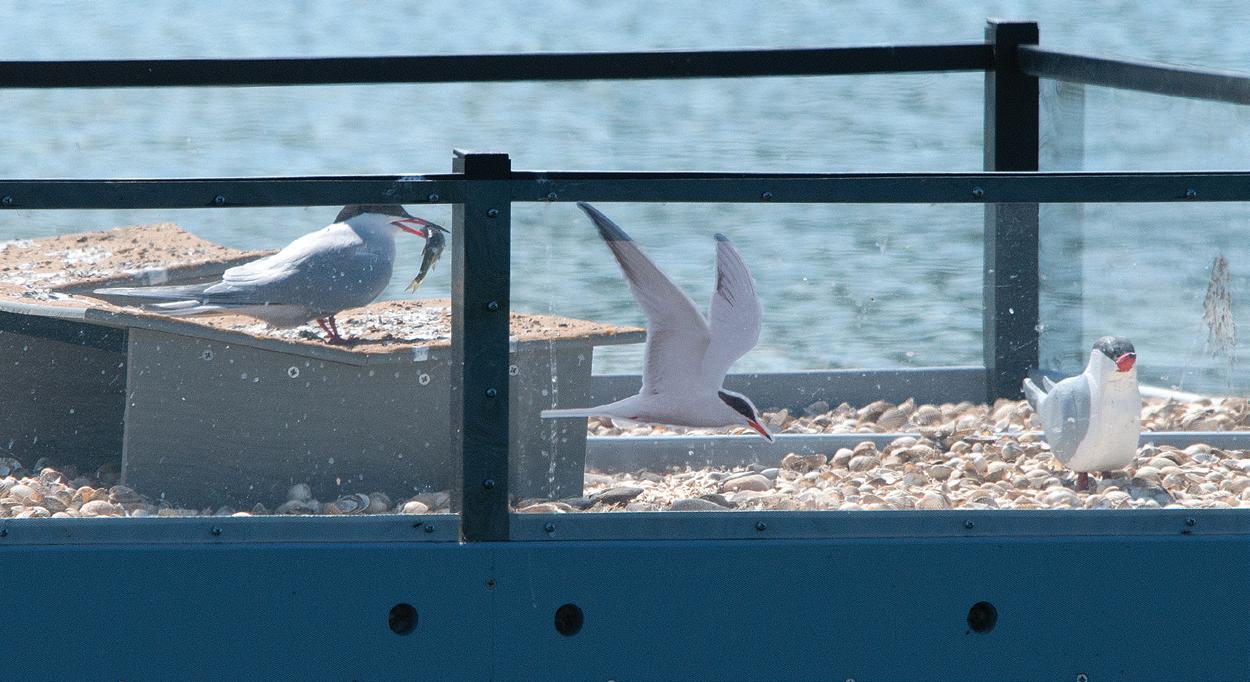




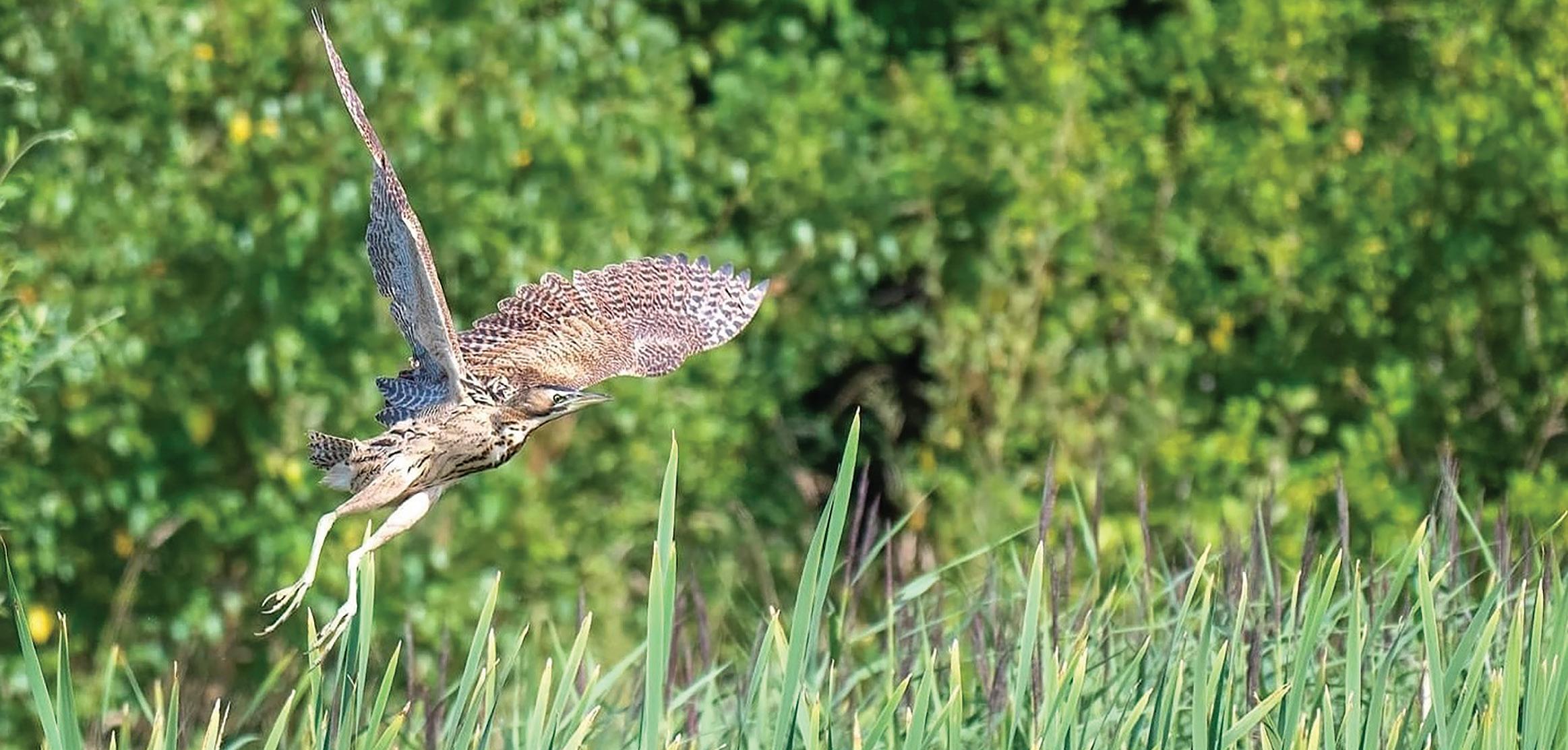




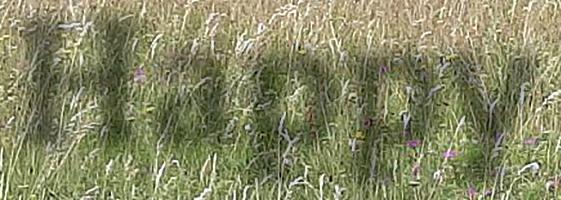


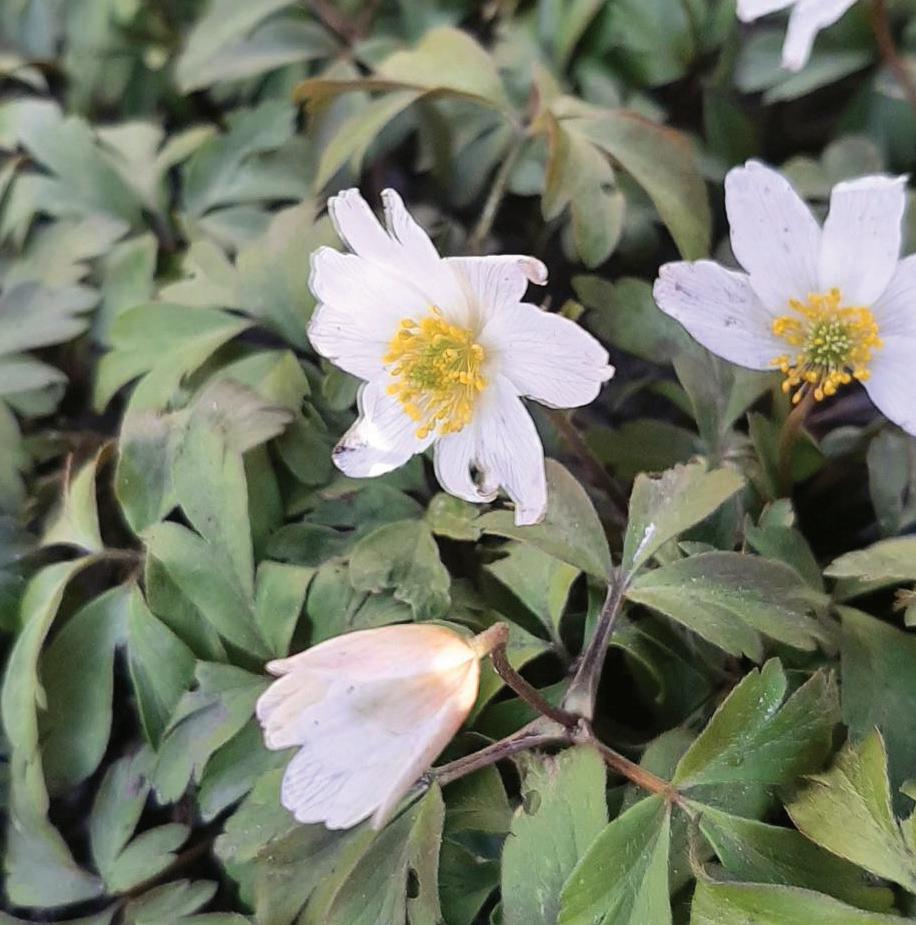


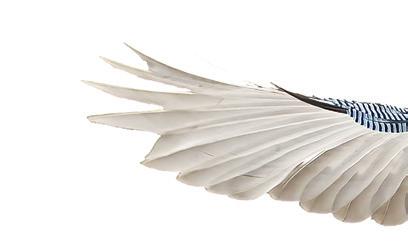
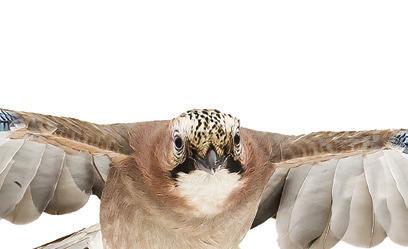

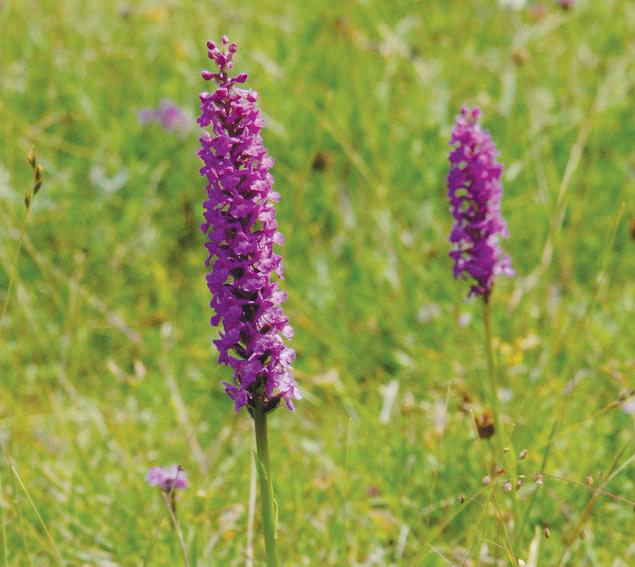
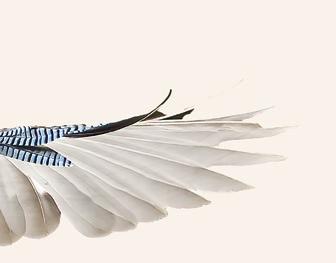























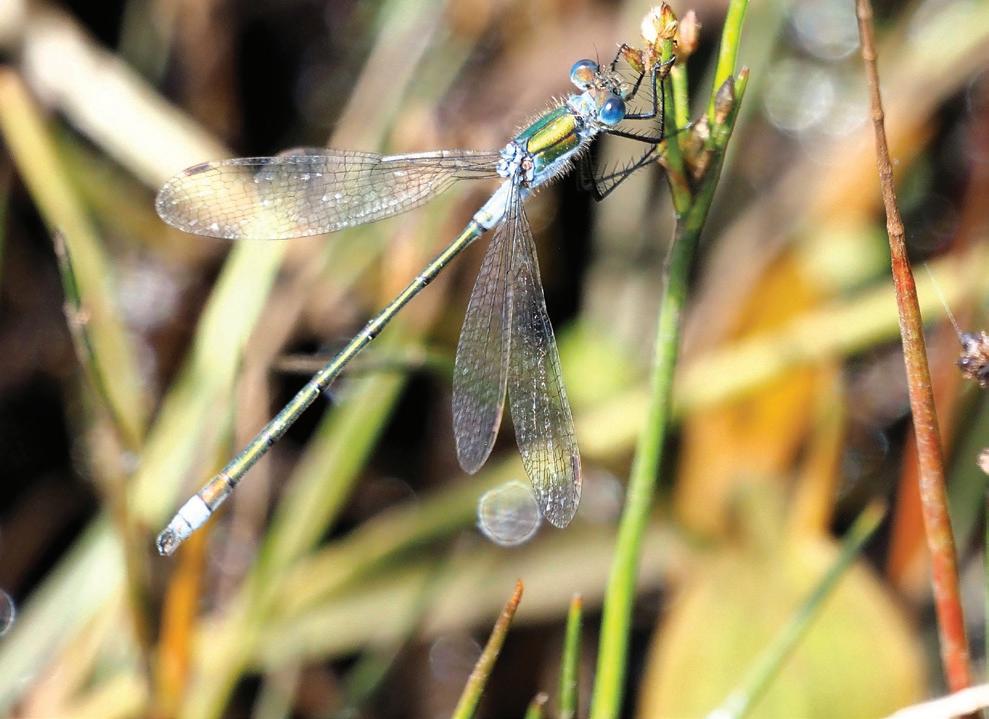



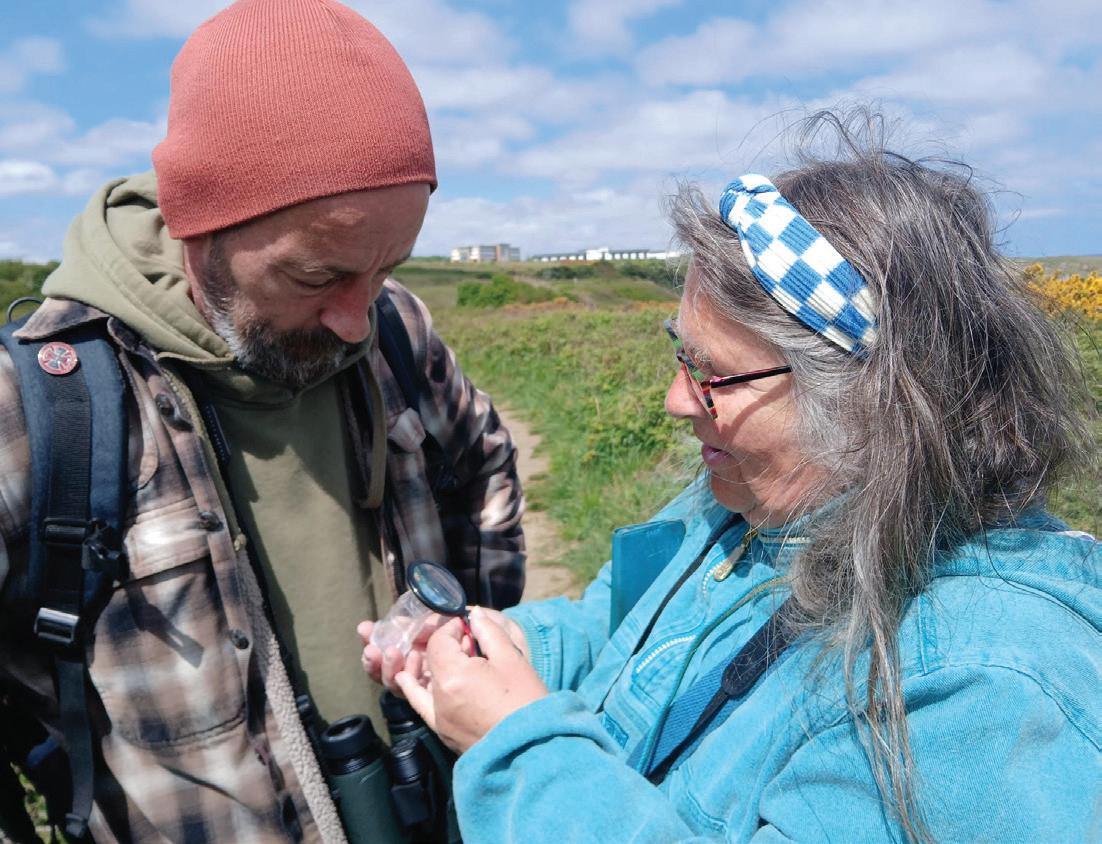
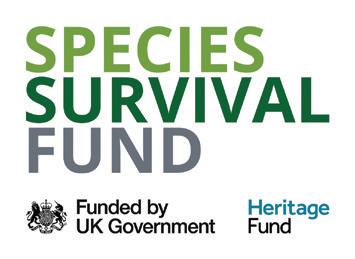


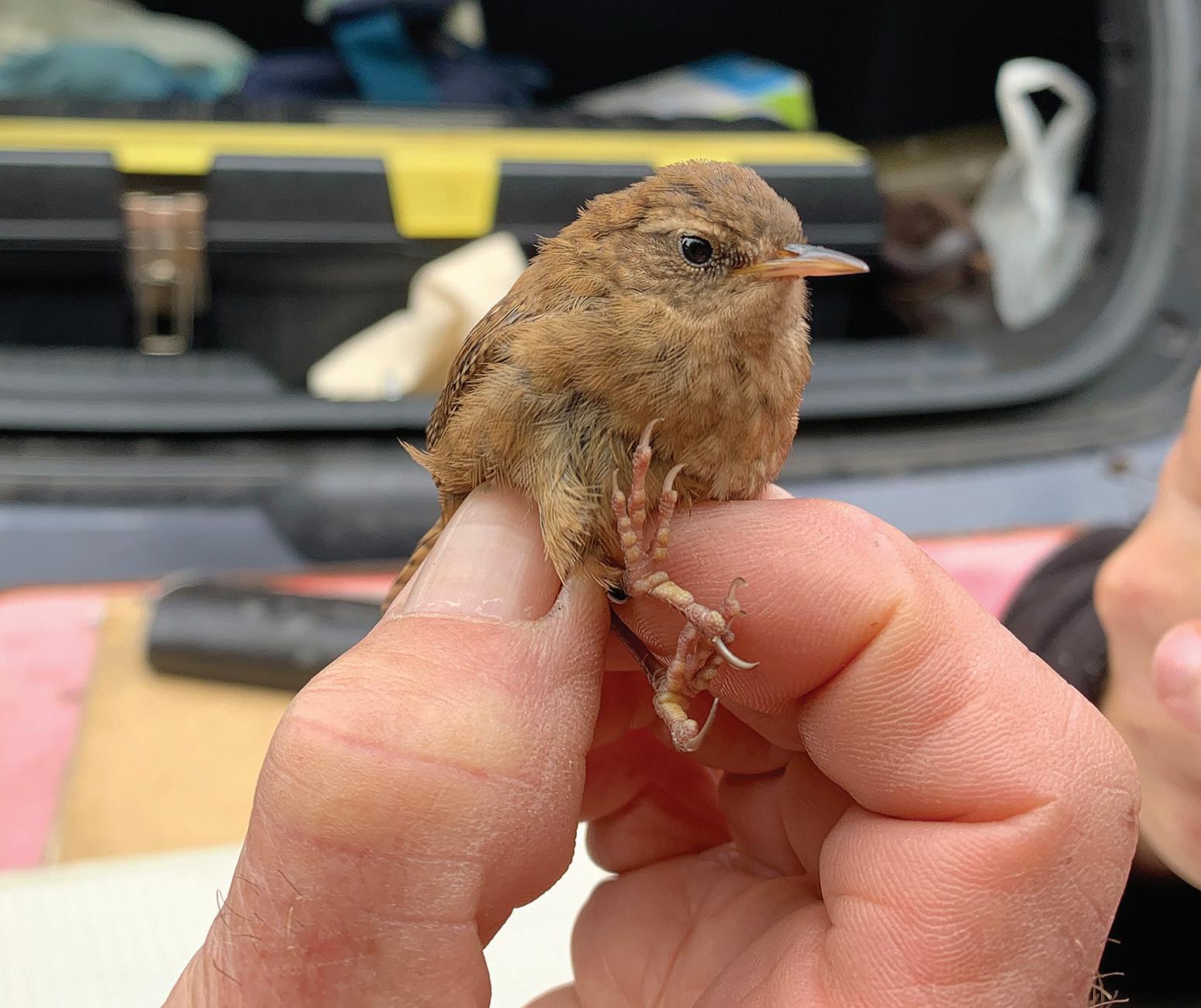









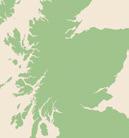
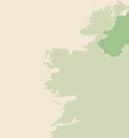












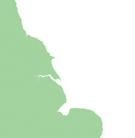




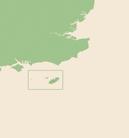

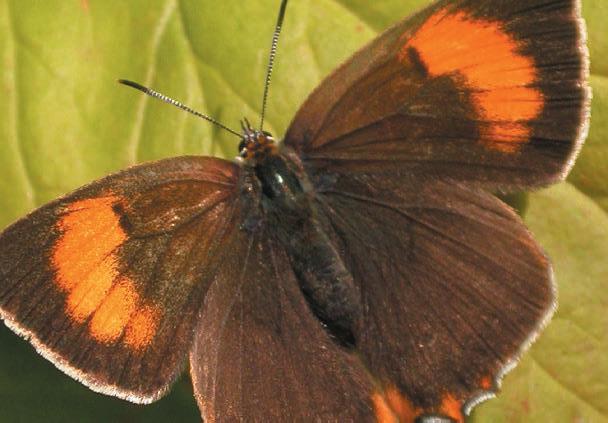




























































































































1 Isle of Eigg, Scottish Wildlife Trust
The only UK resident orcas live in the Hebrides. Other regular sightings in the Hebrides include minke whales, basking sharks and common dolphins. Visit the Isle of Eigg for guided walks throughout the summer and discover more through the Scottish Wildlife Trust’s Snorkel Trails.
Where: Isle of Eigg, The Hebrides
2 Runkerry Head, Ulster Wildlife
Some 25 species of whale, dolphin and porpoise have been recorded in Irish waters. The most frequently recorded in Northern Irish waters are minke whale, bottlenose and common dolphins, harbour porpoise and basking shark.
Where: Runkerry Head, Northern Ireland
3 Marine Drive, Yorkshire Wildlife Trust
With over 350 sightings recorded in 2024, Marine Drive in Scarborough is one of the best places on the English coast to see bottlenose dolphins and harbour porpoises. Minke whales visit frequently and humpback whales have been sighted several times during the summer.
Where: Marine Drive, Scarborough
4 Marine Drive, Manx Wildlife Trust

One of the greatest joys of living on an island is the chance to see some of the world’s most magnificent marine megafauna. From orcas and basking sharks to bottlenose dolphins and harbour porpoises, seeing these animals provides some of the most exciting wildlife spectacles.
Many of these species are sociable animals, often gathering together in groups or pods to feed when food is abundant. The opportunity to witness these animals increases between April and November, making summer the prime season to spot some of the 28 different species of whales and dolphins found around the UK coastline.
When you’re out on the water or watching from the coast look out for activity at the surface. Seabirds feeding, ripples on the surface or rogue waves, a glimpse of a dorsal fin or a full leap out of the water.
While encounters are unforgettable, please respect these precious ocean giants and other marine wildlife. Give them space, stay at least 100 metres (330 feet) away to minimise disturbance and use binoculars or a camera with a zoom to watch wildlife from a safe distance.

You can see basking sharks, minke whales and bottlenose, common and Risso’s dolphins from the Isle of Man. Grey and common seals, plus harbour porpoises can be seen year-round. For late summer minke whale sightings go to Marine Drive on Douglas Head, when the whales follow herring to their spawning grounds.
Where: Marine Drive, Douglas Head
5

Cardigan Bay,
The Wildlife Trust of South and West Wales
Cardigan Bay is a hotspot for marine wildlife sightings of bottlenose dolphins, harbour porpoises and grey seals. There are occasional sightings of common dolphins, basking sharks, minke whales, sunfish and leatherback turtles during the summer months.
Where: Cardigan Bay Marine Wildlife Centre, New Quay
6 Land’s End, Cornwall Wildlife Trust
Cornwall boasts an incredible range of megafauna sightings around its coast, from common, Risso’s, bottlenosed or white-beaked dolphins and harbour porpoise, to grey and harbour seal, basking shark, blue-fin tuna, humpback, fin, minke and even the occasional orca.
Where: Land's End, Cornwall
Did you spot any megafauna?
We’d love to know how your search went. Please share your best photos with us!













Like so many wild encounters, it came down to timing, research and a little bit of luck. I knew I was in the right place – patrolling a patch of grass, shrubs and saplings beneath towering birch trees. I knew it was the right season, with the late spring sun warming the morning.
But I’d been here before and left disappointed. How could I hope to spot one little beetle in a forest of foliage?


But there she was, a splash of red amongst the green. Hunkered on a leaf, soaking in the sunlight, warming up for her maiden flight. A female hazel pot beetle. She was almost cartoonishly oblong, a caricature of a beetle with her black head tucked beneath her bright red body. I’m not sure if it was her shape, her colour or her rarity that enchanted me, but that encounter will live long in my memory. I’ve enjoyed similarly magical moments with many more beetles, from dazzling jewel beetles to cliff tiger beetles racing across rocks. The sheer number and variety of beetles in the UK is staggering – there are more than 4,000 of them. Wherever you look, however long you search, there will always be a new beetle to discover. They’re even more diverse than The Beatles’ back catalogue and, I think, should be just as celebrated. It’s time for a new Beetlemania!









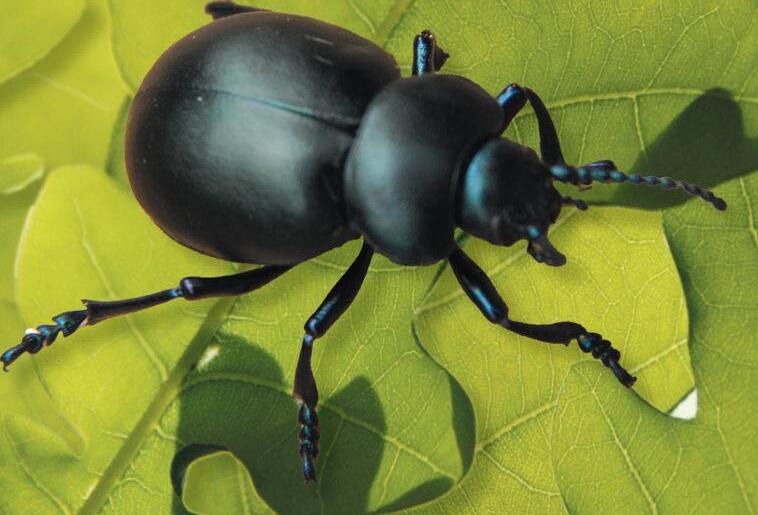




















Tom Hibbert is a naturalist and content officer for The Wildlife Trusts. He’s currently on a quest to track down all of the UK’s tiger beetles. to track down all Tom Hibbert







































If the nation had a favourite beetle, it would probably be a ladybird. They’re familiar, brightly coloured and considered the gardener’s friend, thanks to their appetite for aphids. When you picture a ladybird, it’s likely the 7-spot, with seven black dots decorating its bright red back. But did you know there are almost 50 species to discover in the UK?



















Many of them share a similar style, pairing red and black. Others can be orange or yellow. These bright colours are a warning. They let potential predators know that this meal would leave a bad taste in the mouth. This is known as aposematic colouration. Studies have shown that brighter ladybirds tend to be more toxic, with birds less likely to attack the brighter species as a result.
































The 14-spot ladybird stalks aphids across nettles


The largest ladybird is the eyed ladybird, reaching a (relatively) impressive length of 8.5 mm. It’s a conifer specialist, best looked for on the branches of Scots pine. Whilst many ladybirds are found in trees, there are plenty to be discovered closer to the ground. The 14-spot ladybird stalks aphids across nettles and other low-growing plants. It’s a beautiful, bright yellow beetle, with rectangular black spots that often fuse together.






Not all ladybirds are large and brightly coloured. Almost half of our resident species are considered inconspicuous ladybirds. They’re small, subtly marked and much more difficult to find. The aptly named dot ladybird can be as little as 1.3 mm. It’s a black speck often found on fruit trees, where it hunts spider mites – helping to control their numbers.
ladybird can be as little as 1.3 mm. It’s a black


oak jewel beetle, rosemary beetle, devil’s coach-horse, stag beetle, thick-legged flower beetle, black oil beetle.





















































































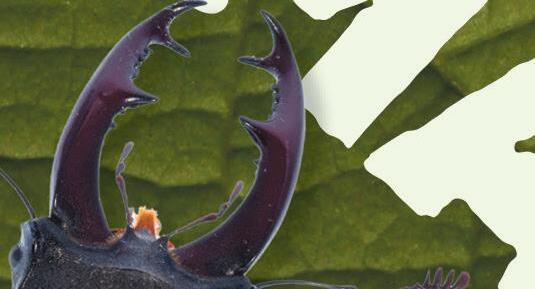


Tom Hibbert delves into the best of the beetles.






































Let it bee
Imitation is the greatest form of flattery, but it can also be an excellent survival strategy. Lots of defenceless insects have evolved to look like bees and wasps to fool predators. This is known as Batesian mimicry and there are some brilliant beetles getting in on the act.
One of my favourites is the bee beetle. It has black bands across its yellow wing cases, bringing to mind a bee’s bum. The effect is enhanced by a fuzzy ginger back and a habit of trundling across flowers. But as any good cover band knows, it’s not enough to look like your idol, you have to sound like them too. Bee beetles buzz as they fly from flower to flower. Sadly, you’re unlikely to see one away from Wales or the Highlands of Scotland.













The sheer number and variety of beetles in the UK is staggering – there are more than 4,000 of them.


Luckily, there’s another mimic found a lot more widely. The wasp beetle lives in woodlands across most of Britain. Yellow bands across its black body give the impression of a wasp. The beetle adds to this effect by moving in a jerky, wasp-like manner. You can often find wasp beetles resting openly on leaves or fences, trusting their colours to keep them safe.






Beetles benefit from wilder gardens! Download our free guide to bring the best beetles to your patch

wtru.st/Beetles


Hey jewel











How do you take a beetle and make it better? You make it shiny! From shining stripes to metallic sheens, there are some gloriously glossy beetles in the UK.


beetles in the UK.
Jewel beetles live up to their name, with some species shimmering emerald or bronze. But, like true precious gems, they’re hard to come by. Their larvae leave characteristic D-shaped holes in the trunks of trees, but it takes a lot of luck to spot an adult. Fortunately, there are plenty of shining beetles that are far more easily found.


For example, rose chafers. These big beetles are hard to miss, visiting flowers on a sunny day. They’re a gorgeous, metallic golden-green, their colours shifting as the sun catches them. Like many beetles, they are pollinators, fulfilling the same important role as bees and butterflies. Rose chafers are found throughout southern Britain, sometimes visiting gardens.









Another glittering garden visitor is the rosemary beetle. Its metallic green back is embellished with striking purple stripes. It’s a recent arrival to the UK but has quickly spread. These beetles are easily found on rosemary and other aromatic plants. They are leaf beetles and share the genus Chrysolina with many equally attractive species, including the mint leaf beetle and dead-nettle leaf beetle.



including the mint leaf



Twist and snout



Let’s shake it up from the bright and bold and explore some of our more bizarre beetles. When it comes to looks, weevils have the best nose in the business – though technically it’s a rostrum with their mouthparts at the end. This long ‘snout’ gives them a comical appearance, which is only enhanced by their large and often prominent eyes.

One of the longest snouts belongs to the acorn weevil. Females use theirs to bore into an acorn, allowing them to lay an egg inside. The young weevil grows inside the acorn, eventually burrowing out to pupate in the soil. Not all weevils have such a long snout. The scarce fungus weevil’s rostrum is broad and flattened. If feeds on the fungi known as King Alfred’s cakes, its mottled pattern providing the perfect camouflage.
Whether they’re strangely shaped, shiny, brightly coloured or masterful mimics, beetles are brilliant. They are pollinators, predators and recyclers, carrying out the vital tasks that help keep wild places balanced. Let’s come together and celebrate these incredible insects.


Chalk Rivers and the UK’s Growing Water Crisis



Ali Morse is Water Policy Manager at The Wildlife Trusts, working across the Trust federation, and in partnership with other organisations, to call for better protections for the water environment.
Crystal clear waters flow over colourful gravels, green fronds sway. Above, damselflies flit, wings glinting in the sunshine. I dip my fingers into the cool stream, scattering minnows. This tranquil, quintessentially English scene I hold in my mind, because the chance to see it in reality is shrinking.
Found across southern and eastern England, chalk streams are a global rarity occurring almost nowhere else. Whilst many UK rivers are rainfed, chalk streams flow from vast underground aquifers of porous chalk rock. A sunshade, filter and giant reservoir, cool, clean, consistent river flows result. The water requires comparatively little treatment to make it drinkable, making these rivers incredibly useful to society.




But whilst abstraction – extracting water for human use – won’t generally drain the river dry, not having enough water can be fatal for a river and its wildlife. Insufficient water means less physical space for plants, insects and fish, more concentrated pollution, and slower, oxygenpoor flows that warm faster in the sun (high temperatures are harmful to fish like salmon through damage to eggs, juveniles and adults).
Environmental groups have long raised concerns over excess abstraction from chalk streams or their aquifers. Extracting just 10% can potentially damage the complex local hydrology and harm particular species. And yet, for a group of rivers mostly around London – the Cam, upper Hiz, Cray, Darent and Upper Lea – more than 50% is taken. Drinking water supplies from these rivers simply aren’t sustainable.
in Scotland, regulators have produced a ‘water scarcity plan’ because dry periods and droughts are becoming more frequent whilst water demand in homes, farming and industry is growing. In England, the Environment Agency is updating the ‘Water Resources National Framework’, a long-term view of water needs that will show if we don’t take action, by 2050 we will fall short of the water needed for society and for rivers by 5,000 Megalitres – or 5,000,000,000 litres – per day. The greatest shortfall will be in south-east England, where chalk streams are located, but all of England faces water supply challenges.
Water supply is a key reason planning permission is refused, placing UK Government housing targets at risk. However, solutions can be found. The Environment Agency recently withdrew objections to development in Cambridgeshire after a programme of water efficiency to offset new demand and new reservoirs to ease supply issues were agreed.

Supply concerns aren’t restricted to chalk streams. The water company serving most of Wales said that without action, it won’t have sufficient volumes across zones that serve 70% of its customers, so it needs to invest in new supplies and in reducing demand to ensure it has enough headroom to weather any droughts. Even
Habitat enhancement projects are crucial to ensure chalk streams can endure in the meantime. Hertfordshire and Middlesex Wildlife Trust is creating a more resilient River Lea with 1.5km of woody features, bankside tree management, regrading banks and adding wetland features. The Wildlife Trust for Bedfordshire, Cambridgeshire and Northamptonshire removed redundant weirs on the River Granta, improving flows and opening up new areas of habitat to migratory fish in Cambridge.
We must all take action. Ask your MP for tighter water use requirements for new homes and to introduce a water use labelling scheme for white goods and bathroom fixtures, add a water butt in the garden, and take the 3-minute shower challenge.
Help us call upon Government to take action to protect chalk streams. Sign the petition at wtru.st/chalk-streams-petition





Temperate rainforests, which once covered a fifth of the UK but now cover less than one per cent, contain one of the oldest plants in the kingdom – moss. These prehistoric plants have been around since before the dinosaurs. They are phenomenal and need their moment to shine. So why not give your garden the temperate woodland makeover with moss, ferns and lichens.
You may already have moss in your garden in the damp, shady environments. These mossy habitats are sacred and need time to be left alone to grow. Sadly, often people don't see moss as a plant in the garden, they see it as a problem that needs to be scraped off. We absolutely have to stand up for these ancient mossy places or they will be lost.
Moss is an essential part of any garden ecosystem where fungi grows and a host of small creatures find shelter and food. Beetles, slugs and snails to tiny springtails and microscopic creatures attract birds and other animals higher up the food chain.
Zoe Claymore, the award-winning garden designer behind The Wildlife Trusts' British Rainforest Garden at the RHS Chelsea Flower Show, connects us to moisture loving plants in our gardens from our Celtic past.
I spent my childhood playing on mossy boulders over the River Lyd, in a temperate woodland in Lydford Gorge out the back of my grandparents’ house. I firmly believe moss is a great addition to any garden: when I feel the soft, velvety cushion under foot or in my hands, I still have that childlike sense of wonder.
In my British Rainforest Garden, I use a leaning silver birch tree and hazel tree to create a British rainforest vibe, whilst water trickles over natural stone boulders to evoke the sounds of the forest. Garden-friendly adaptations include an accessible wooden walkway through the wonderland, and a living wall covered in ivy, ferns, woodland flowers –and moss, of course!




Zoe Claymore is an award-winning landscape and garden designer based in southwest London. In 2023 she won RHS Gold, People’s Choice, and Best ‘Get Started’ Garden at Hampton Court for her design of The Wildlife Trusts': Renters’ Retreat



The charismatic, tall pink foxglove flowers are a reminder of the hazy days of summer buzzing with bumblebees and moths.

Ferns
Have fun with ferns and throw them some shade in the garden so those lush, curly fronds can thrive. This is the purple royal fern.

Hazel
Hazel trees are good in the city for smaller gardens, great for wildlife and can be coppiced to use as stakes in the garden.

Hypnum cupressiforme moss
This is great moss for lawns and very ecologically adaptable.

The British Rainforest Garden at RHS Chelsea Flower Show was made possible with generous sponsorship from Project Giving Back and our British Rainforest partner Aviva. The garden will be relocated to Bristol Zoo after the show.

Black spot lichen
Lichens are epiphytes or “air plants” that survive on nutrients and moisture in the air. They are made of fungus and algae, ‘rock up’ on trees and take time to grow.



Dicranum scoparium moss
This gorgeous moss is great for adding patches to the lawn. It's amazing under foot, so soft and spongy and easy to maintain.


Silver birch
Silver birch trees often don't grow straight in these habitats, so to celebrate nature’s resilience, I’ve included a leaning tree. Embrace the imperfect, don't get rid of it.

Oak moss lichen
Lichen takes time to grow on the bark of a tree, thriving on sunlight and moisture. There are many different types of lichen that spread slowly with wonderful names from oak moss to shaggy strap and handwriting lichen.

Humanity’s demands today for nature’s goods and services far exceed her ability to meet them on a sustainable basis. We need 1.7 Earths to maintain the world’s current living standards, and that’s a conservative estimate. But we would not know that by studying the measure most widely used to judge economic success: Gross Domestic Product (GDP).
That’s because GDP does not consider the depreciation of assets, such as wetlands, mangroves, coral reefs, grasslands and forests, that accompany our production and consumption activities. An economy could be enjoying GDP growth for a long while even as the basis on which we produce and consume degrades and shrinks.
The human overreach is reflected in the rate at which species are becoming extinct, currently at some 100-1,000 times the rate of extinction over the past several million years. But when we think of human-induced species extinction, large-scale changes in land use come to mind.
We tend to think of forests being transformed into land for crops, animal farms and plantations; of grasslands transformed into pastures; and of mines and quarries ripping apart dense jungles. But there is a more insidious process at work, which is perhaps as powerful: the bit-by-bit fragmentation of ecosystems that accompanies GDP growth.
Persistent, incremental encroachment into nature is insidious because each move seems near harmless: a new bus lane cutting through an ancient orchard here, a mangrove forest sliced to make way for a luxury hotel there, a bat habitat destroyed to make room for additional housing in an urban sprawl


elsewhere. The problem is, the orchard will not return, the mangrove forest won’t have space to recover its previous glory and the bat population will die because it has nowhere to go.
If at each move human demand is allowed to trump ecological integrity, the landscape that evolves becomes denuded of wildlife. It is there that we each can play a role by minding our own neighbourhood. Unlike global climate change, over which no group on its own can have a marked effect, biodiversity can be protected by communitarian endeavours. Our Wildlife Trusts play an enormous role in protecting and preserving local wildlife. Projects like the Wildlife Trust for Bedfordshire, Cambridgeshire and Northamptonshire’s acquisition and preservation of Strawberry Hill, a rewilded farm in Bedfordshire, are helping to expand space for wildlife in some of the most naturedepleted areas of the UK. And on a different scale, the same Trust, of which I’m proud to be President, is working with young people in Luton to plant hedgerows in local parks that connect woodlands and other habitats together. This allows wildlife to thrive in the most urban of environments and simultaneously ensures that the local residents are connected to the wildlife that shares their neighbourhood, too. Wildlife Trusts all over the country have similar projects and together we are making a difference.
Done right, nature makes every development high-quality, attractive and sustainable. Co-sign our open letter, calling for new developments to work in harmony with nature.
wtru.st/planning-bill
The Wildlife Trusts’ Chief Executive, Craig Bennett, met with Professor Dasgupta to discuss the findings of the globally respected review on The Economics of Biodiversity You can catch up on the recording of our WildLIVE on The Wildlife Trusts’ YouTube channel by visiting wtru.st/Economicsof-Biodiversity
Sir Partha Dasgupta is a globally respected environmental economist and professor at Cambridge University, author of a groundbreaking report on protecting global nature and president of the Wildlife Trust for Bedfordshire, Cambridgeshire and Northamptonshire.



































